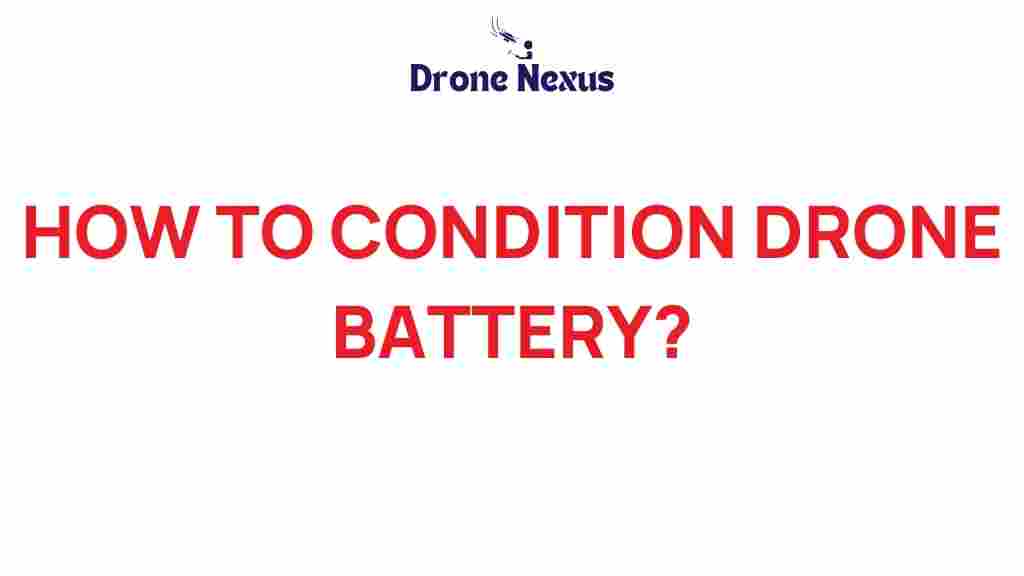Unlocking Drone Performance: Essential Tips for Battery Conditioning
In the rapidly evolving world of drone technology, ensuring optimal performance is crucial for both hobbyists and professionals alike. One of the most vital components that significantly affects drone performance is the drone battery. Proper battery conditioning can enhance flight times, maintain efficiency, and prolong the overall lifespan of your drone. In this article, we will delve into essential tips for battery conditioning, addressing common issues, and providing a comprehensive guide to help you unlock the full potential of your drone.
Understanding Drone Batteries
Before we dive into the tips for conditioning your drone battery, it’s essential to understand what makes up these power sources. Most drones use lithium polymer (LiPo) batteries due to their high energy density and lightweight properties. However, they require specific care to ensure longevity and performance.
Types of Drone Batteries
- Lithium Polymer (LiPo): Most common in the drone industry due to their lightweight and high discharge rates.
- Lithium-Ion: Generally used in larger drones for longer flight times but heavier than LiPo.
- NiMH (Nickel Metal Hydride): Less common but offers a more stable discharge rate; used in older models.
Understanding the type of battery your drone uses is the first step in effective battery conditioning. Always refer to the manufacturer’s guidelines for specific recommendations.
Steps for Effective Battery Conditioning
Now that we’ve established the importance of your drone battery, let’s explore a step-by-step process for proper conditioning.
Step 1: Initial Inspection
Before using your drone, perform a visual inspection of the battery:
- Check for any physical damage, such as dents or punctures.
- Look for swelling or bulging, which can indicate a serious issue.
- Inspect the connectors for corrosion or dirt.
If you notice any of the above signs, it’s best to replace the battery.
Step 2: Charge Your Battery Properly
Charging is critical in battery conditioning. Follow these guidelines:
- Use a charger specifically designed for your drone battery.
- Charge at an appropriate rate; most LiPo batteries have a C rating that indicates the charge rate.
- Avoid overcharging. Disconnect the battery once it reaches the full charge.
For optimal performance, consider charging your battery to about 80% for regular use, reserving the full charge for critical flights.
Step 3: Discharge and Cycle Your Battery
Regularly cycling your drone battery helps to maintain its health:
- Discharge your battery to about 3.7V per cell (for LiPo) before charging it again.
- Perform a full charge and discharge cycle at least once a month.
- Use a battery management system to monitor the health of your cells.
This process helps to balance the cells, ensuring that they charge and discharge evenly.
Step 4: Store Your Battery Properly
Proper storage can extend your battery’s lifespan significantly. Here are some tips:
- Store your drone battery at room temperature, ideally between 20°C to 25°C (68°F to 77°F).
- Avoid exposing your battery to extreme temperatures, as this can cause damage.
- For long-term storage, discharge the battery to around 3.8V per cell.
Storing batteries in a fireproof bag can also add an extra layer of safety.
Step 5: Monitor Battery Health Regularly
Keeping an eye on your battery’s health is crucial:
- Use a multimeter to check voltage levels regularly.
- Keep track of flight times and performance; a noticeable drop could indicate battery wear.
- Consider investing in a battery management system for detailed analysis.
Regular monitoring helps you catch potential problems early and prolongs the life of your drone battery.
Troubleshooting Common Battery Issues
Even with the best care, issues can arise with your drone battery. Here are some common problems and their solutions:
Problem 1: Rapid Discharge
If you notice that your battery is discharging faster than usual, consider the following:
- Check for damaged cells. A multimeter can help test each cell individually.
- Ensure your drone isn’t overloaded with unnecessary equipment.
- Evaluate your flying conditions; high winds can lead to excessive power consumption.
Problem 2: Swelling or Bulging
This is a sign of a serious issue and should be addressed immediately:
- Do not use a swollen battery; dispose of it according to local regulations.
- Store batteries in a safe location away from flammable materials until disposal.
Problem 3: Inconsistent Performance
If your drone isn’t performing consistently, consider these factors:
- Check the connectors for dirt or corrosion.
- Ensure that the battery is properly calibrated with your drone’s firmware.
- Cycle the battery to help balance its cells.
Conclusion
Proper conditioning of your drone battery is essential for maximizing performance and ensuring longevity. By following these essential tips and troubleshooting common issues, you can enhance your flying experience and increase the lifespan of your drone’s power source. Always remember to stay informed and updated on the best practices for battery care and management.
For more information on drones and their maintenance, check out Drone Maintenance Guide.
By taking the time to condition your drone battery properly, you are investing in the overall performance and enjoyment of your drone flying experience. Happy flying!
This article is in the category Applications and created by DroneNexus Team
